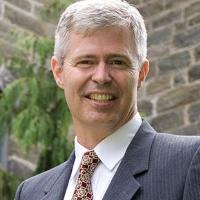Dear Working Preacher,
I’ve got a radically simple outline for your sermon this week, and it can summed up in just one sentence: There are two kinds of people in the world….
Okay, quick digression. Every time I start a sentence with, “There are two kinds of people,” I think of Mark Twain, who said, “There are two kinds of people in the world, people who classify the world into two kinds of people, and people who don’t.” (I also think of my son, who was the first to say to me — after I miscalculated the time it would take to get to camp last summer — “Dad, there are three kinds of people in the world: people who can do math, and people who can’t.”) Twain’s point obvious: we should be careful about classifying the world into just two kinds of people. But I’m still going to do it. (Okay, okay, so by now you’ve realized I’m stalling to raise the suspense. Well, the wait is over. 🙂 )
So…there are two kinds of people in the world: people who need help, and people who need to help. Or, you could say that another way — there are two kinds of people in the world: people who need care, and people who need a calling. Or try this, there are two kinds of people in the world: people who need succor and people who need to serve. (I realize we don’t use “succor” all that often, but I think that though it’s an old word it’s also occasionally a good one; plus, I was looking for something that started with “s.”)
And, of course, no matter how you describe it, we all can be either one of those people at any given time and, indeed, have been. So the question we might consider asking each and every Sunday to each and all of our people is this: “Where are you today? Do you need help, or do you need to help? Do you need care, or do you need a calling?” And after getting answers, we could direct those in need of care to join up with some of those who need a calling so they can take care of each other and, in turn, move out from the church to care for the world.
Amazed, wowed, ready to preach this radically simple message? Not quite? Well then let’s look at today’s reading from Mark, the source of this little homiletical gem. All in all, it’s been a pretty busy day for Jesus. He’s been preaching and teaching to great acclaim at the Capernaum Synagogue, then he heals a guy possessed by an unclean spirit, and then he retires to the home of Simon Peter and Andrew for a little relaxation only to find that Simon’s mother-in-law is sick. So he heals her and then, when word got out, he heals just about everyone else in Capernaum. Yes, it’s been a busy day for Jesus, and so wonder he sneaks away for a time of seclusion, prayer, and renewal (and, trust me, if Jesus needs to do that from time to time, you and I probably do, too). While there’s a lot going on in this passage and chapter, though, I really want to focus on just one little verse: “He came and took her by the hand and lifted her up. Then the fever left her, and she began to serve them” (1:31b).
What’s so special about this verse? Several things, actually. First, there is both the tenderness of Jesus taking Simon’s mother-in-law…
Okay, another quick digression: If only Mark supplied her with a name, we could stop calling her Simon’s mother-in-law! I think for the purposes of this column, I’m going to call her Esther.
So, first there is the tenderness of Jesus taking Esther by the hand, and at the same time the power of Jesus “raising her up,” a Greek verb that Mark uses in connection with healing at a couple of points but which, significantly, is also employed to describe what happens to Jesus at Easter (Mark 16:6). As Sarah Henrich writes in her simply awesome commentary this week, “The word suggests that new strength is imparted to those laid low by illness, unclean spirits, or even death, so that they may again rise up to take their place in the world.”
Second, once Esther is healed, she is ready to serve. While we need to take care that this half of the verse doesn’t play into gender stereotypes — “the woman’s place is to serve,” etc. — there is a poignant restoration of Esther not just to health but to a calling. Again Sarah Henrich puts it so well:
[I]llness bore a heavy social cost: not only would a person be unable to earn a living or contribute to the well-being of a household, but their ability to take their proper role in the community, to be honored as a valuable member of a household, town, or village, would be taken from them. Peter’s mother-in-law is an excellent case in point. It was her calling and her honor to show hospitality to guests in her home. Cut off from that role by an illness cut her off from doing that which integrated her into her world. Who was she when no longer able to engage in her calling? Jesus restored her to her social world and brought her back to a life of value by freeing her from that fever. It is very important to see that healing is about restoration to community and restoration of a calling, a role as well as restoration to life. For life without community and calling is bleak indeed.
So there it is: There are two kind of people in the world; people in need of care, and people who need a commission, a calling, an invitation to live into the kingdom of God in the world. And at any given moment we can be either of these two people, and sometimes we may be both.
All of which leads me to wonder: what if we thought about our congregations in just these terms. We are that institution — no, that community — that responds to those who currently need care and clarifies the calling of those who currently don’t. What might that way of imagining the role, purpose and identity of our congregations do for the way we use our time, or allocate our resources, or run our meetings, or set our priorities, or order our worship? We are that community that responds to those currently in need of care and clarifies the calling of those who currently don’t. Pretty cool.
So what if this week, Working Preacher, we passed out 3×5 cards and invited people to write down one need they had for care or to care, something they needed help with or something they wanted to help with, and had them pass them in with the offering. We’d learn a lot about where our people are just now in their lives and faith journey and perhaps help them make connections with each other. Or maybe we could pass out those cards and those typical name tag holders and invite them to put them in the holder and wear them. We’re not labeling anyone forever, we’re inviting people to be honest about where they are that morning. Who knows, after the service you might see someone who needs a hug run into someone who wants to give a hug, or someone in need of prayer meet up with someone who wants to pray. Or someone looking for a ride to Ash Wednesday Service talking to someone who can drive. (And, toward this end, you might want to offer some suggestions to get people thinking.) It would, I think, be a beautiful sight, seeing the Body of Christ care for each other and turn toward the world in love.
Well there you have it, Working Preacher, the world’s simplest sermon — even if it did take me nearly 1400 words to share and explain! 🙂 Thanks, as always, for all you do, and on this day for helping us to figure out which of these two people we currently are.
Yours in Christ,
David

